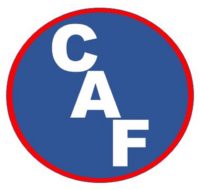Concentrate vs. Finished Foam – the hazards are similar but to different degrees.
NOTE – The recent controversey involving Fire Fighting Foams and PFOA’s applies to only one type of Class B Foam. Class A Foam has no such PFOA’s.
PPE – follow the PPE requirements of your department or other Authority Having jurisdiction (AHJ). However, as a minimum, wear PPE for head, hearing, eyes and skin protection.
NAF & CAF HAZARDS
Slips/Falls – can result from slippery, spilled concentrates as well as from obscured obstacless covered in finished foam. Do you remember what was on the ground where (including holes) before you laid down the the foam? When walking through finished foam, shuffle the feet to find hidden trip hazards. Use an absorption medium to cover and clean up concentrate spills. Washing a concentrate spill away with water will create what seems like a never ending mountan of finished foam.
Concentrate splash can occur while overhead refilling of the foam tank. Eye and slip protection is essential. A blind slip and fall goes a long way from the top of a rig. Many trucks can now be equipped with on board filling systems, whereby the concentrate is pulled from the ground level bucket and pumped to the higher level foam tank.
Eyes – Concentrates are detergents (and we do not mean – No More Tears Detergent). Concentrate splash will cause severe eye irritation requiring immediate copious amounts of clear water flushing. Always where splash protective eye protection while working with both contrates and finished foams.
Skin – Concentrates are detergents that can dry out the skin and cause skin irritation, dryness and cracking. Limit skin contact to the concentrates and immediately flush the affected area of the skin with clear water. Recommend wearing rubber gloves while working with the concentrates.
Leather Products – such as fire boots are similar to the effects on skin. Concentrates can cause drying and cracking of the leather. Flush the affected areas with clear water immediately.
Electrical Hazards – Bubbles is Water. Using water on live electrical equipment can cause severe shock/electricution. Never use water on energized electrical equipment. This warning is for water only, Class A Aspirated Foam and Compressed Air Foam.
Waterway Hazard – Fish cannot breath with Foam in the water. They cannot absorb oxygen through their gills. Finished foam (already at .3 or .5%) will delute further and small amounts of finished foam with have little to no affect. The issue is spilling large amounts of finished foam or spilling the 100% concentrate in a water way. Both NAF and CAF when applied correctly, can be applied next to a water way as the foam will stay where it is applied. Improperly applying too much foam causes run off that can enter the water way or stream. Over application causing run off is needlessly wasting product.
In training, it is common to lay down a lot of bubbles. These bubbles can flow. In reality, it nly takes a small amount of bubbles to do the job. Put the bubbles where you need it. this prevents run off and water way exposure.
Using the Wrong Concentrate – Yes, using the wrong class of concentrate for the wrong class of fire is a Safety issue which could result in burn injuries and significant environmental damage.
CLASS A FOAM is for CLASS A FIRE!
CLASS B FOAM is for CLASS B FIRE!
ADDITIONAL CAF HAZARDS
Nozzle Reaction – Due to the added horsepower of the compressor, the nozzle reaction on a CAF nozzle is almost three times (3x’s) that of a water nozzle. It is recommended that two firefighters handle the nozzle and hose during all training exercises, as well as in the fire environment.
A lose nozzle with 3x’s the reaction, can cause a lot more damage and injury than a regular nozzle. HOLD ON TIGHT!!
Insure good secure footing when operationg a CAF nozzle. Improper footing can result in injury or damage.
In training, NEVER increase the operating pressure higher than recommended.
Never straight arm the nozzle. The elbow is not designed to hold that reaction. The nozzle can cause severe head injuries (even with a protective helmet), not to mention knocking the operator on his/her butt.
Straddling the Hose – this applies to all fire hose, however, with CAF, the energy is higher. You do not want to be straddling a fire hose when it blows.
Noise – All fire engines produce noise during a fire fight. Since the CAF system has additional functioning components, the noise level will be increased. the operator and any personnel working in close proximity to a working fire apparatus should wear appropriate hearing protection. The noise level is generally not a factor at the nozzle end of the hoseline.
Slug Flow – Water and Air do not mix. Water + Concentrate (Solution) mixes with air to make foam. If, for whatever reason, there is no concentrate flowing, Water and Air do not Mix. The water and air , having different nozzle reactions, follow each other down the hose line causing a very uncomfortable, rapid, violent thumping action. This action is akin to the nozzle operator having a seisure. It generally doesn’t take the nozzle operator long to shut off the nozzle and stare angrily at the pump operator. It’s imperative to restart the concentrate flow to continue making bubbles.
Lack of Flame – CAF is very rapid at knocking down the fire and temperature. However, CAF (like water) does not absorb toxic gases. It can be deceiving as the fire looks out but the gases could remain. Do not get over confident. Maintain full use of SCBA inside a structure until the atmosphere has been deemed safe for unprotected respiration.
Hot Equipment – When working in close proximately to the components of the CAF System, pay attention to nearby hot surfaces.



























